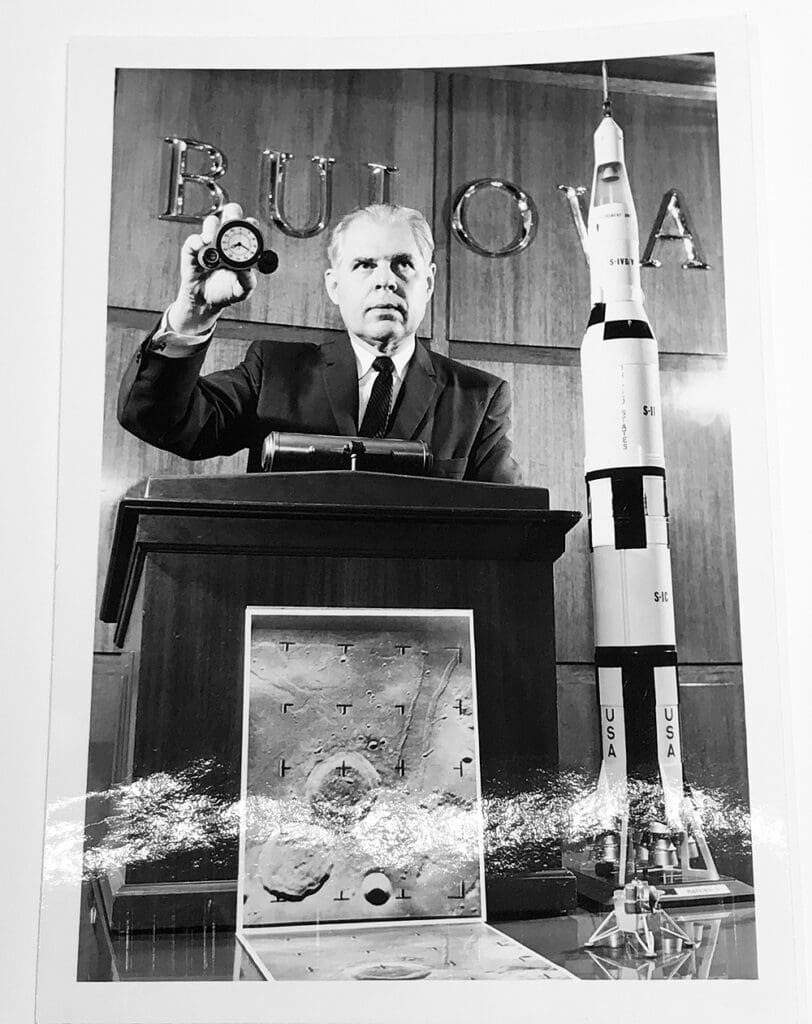Accutron, the world’s first fully electronic watch, marks its 60th anniversary in 2020

Reconstituted as an independent brand separate from Bulova, its original parent company, it is ushering in the new era with 21st century technology and a healthy dose of mid-20th-century nostalgia, starting with the retro-inspired Spaceview 2020. The watch will be among the highlights from 24 sponsoring watch brands at next week’s WatchTime Live virtual event.
Accutron Spaceview 2020
Introduced in 1960, the original Bulova Accutron incorporated a revolutionary new technology that utilized a tuning fork, powered by a one-transistor electronic oscillator, to drive the timekeeping functions rather than a traditional balance wheel. Its name stood for “Accuracy through Electronic.” The brainchild of Bulova engineer Max Hetzel, this technology ensured an oscillation rate of 360 hertz — nearly 150 times faster than that of a mechanical, balance-wheel-driven timepiece — and guaranteed an accuracy to just one minute per month. The now-legendary first Accutron model, called the Spaceview 214 (the numerical designation derived from the movement, Caliber 214), was like no other watch previously seen, or heard, on the market — distinguished audibly by the telltale humming generated by the tuning fork rather than the traditional ticking of its mechanical brethren. Its high-tech movement, with its circuit-board-green elements in full view behind an open dial, deviated from traditional wristwatch design with its lack of setting stem and crown on the side of the watch; these elements were instead placed on the back of the case.
The original Accutron debuted in 1960.
All in all, the Accutron proved to be an ideal wristwatch for the Space Race heyday of the 1960s, and achieved a number of milestones. A partnership between Bulova and NASA led to Accutron dashboard clocks being installed on the spacecraft of all the Apollo missions; one remains on the moon to this day, inside the lunar vehicle left behind in the Sea of Tranquility after the historic moon landing in 1969. President Lyndon B. Johnson declared Accutron wristwatches the official “Gift of State,” in 1964 and Accutron clocks were installed on Air Force One, the presidential jet, in 1967.
Bulova partnered with NASA to make Accutron clocks for spacecraft.
The birth of Accutron centered around an unprecedented technological breakthrough in watchmaking, and the rebirth of Accutron as an independent brand, separate from Bulova, within the Citizen Group could be built upon nothing less. The advancement in this case was the new, proprietary Accutron movement, which was powered by electrostatic energy generated from the motion of the wearer’s wrist. The movement’s fast-rotating twin turbines are affixed to two electrodes that send energy to an accumulator powering two tiny motors — one an electrostatic motor driving the smooth motion of the seconds hand (a world first), the other a step motor for the hour and minute hands — both synchronized through integrated circuits for an accuracy of +/- 5 seconds per month. The development of the movement, says Citizen Group America president Jeffrey Cohen, took over a decade, as part of a long-range plan for Accutron that began almost immediately after the Citizen Group took over Bulova in 2008. “Technology is always on the mind of watch enthusiasts,” he acknowledges, “whether it’s in movement advancements, or some other area. We wanted to honor the original brand by going back to its roots while still introducing an advancement in timekeeping technology that’s never been seen before.”
Tags: